How strength training helps prevent falls is something I’ve learned firsthand. As I’ve gotten older, I’ve noticed my balance isn’t quite what it used to be. It’s easy to feel unsteady, especially when I’m walking on uneven ground or trying to get up from a chair. That’s why I decided to give strength training a try. And let me tell you, it’s been a game-changer!
How Strength Training Helps Prevent Falls And Injuries in Seniors
Building Balance for a Safer Future
As we age, staying active becomes even more important. Strength training is a great way for seniors to keep fit and avoid falls. Strength training can help prevent falls and injuries in older adults by improving balance, muscle strength, and reaction time.
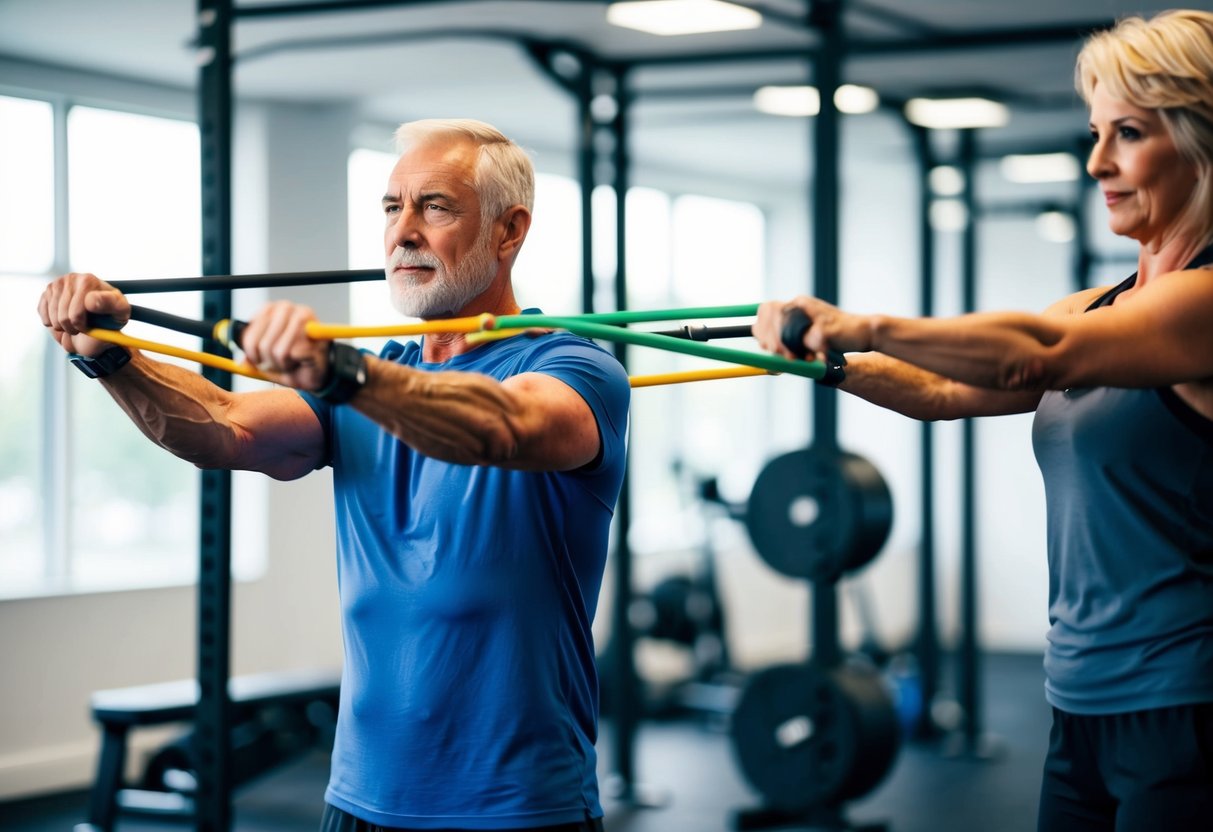
Many seniors worry about falling and getting hurt. But there’s good news! Regular exercise, especially strength training, can make a big difference. It helps you stay steady on your feet and keeps your bones strong.
You don’t need fancy equipment or a gym membership to get started. Simple exercises at home can do the trick. Things like squats, leg lifts, and arm curls can help build strength. Always check with your doctor before starting a new exercise program.
Key Takeaways
- Strength training improves balance and muscle strength in seniors.
- You can do many effective exercises at home with little or no equipment.
- Regular strength training can boost confidence and independence in daily activities.
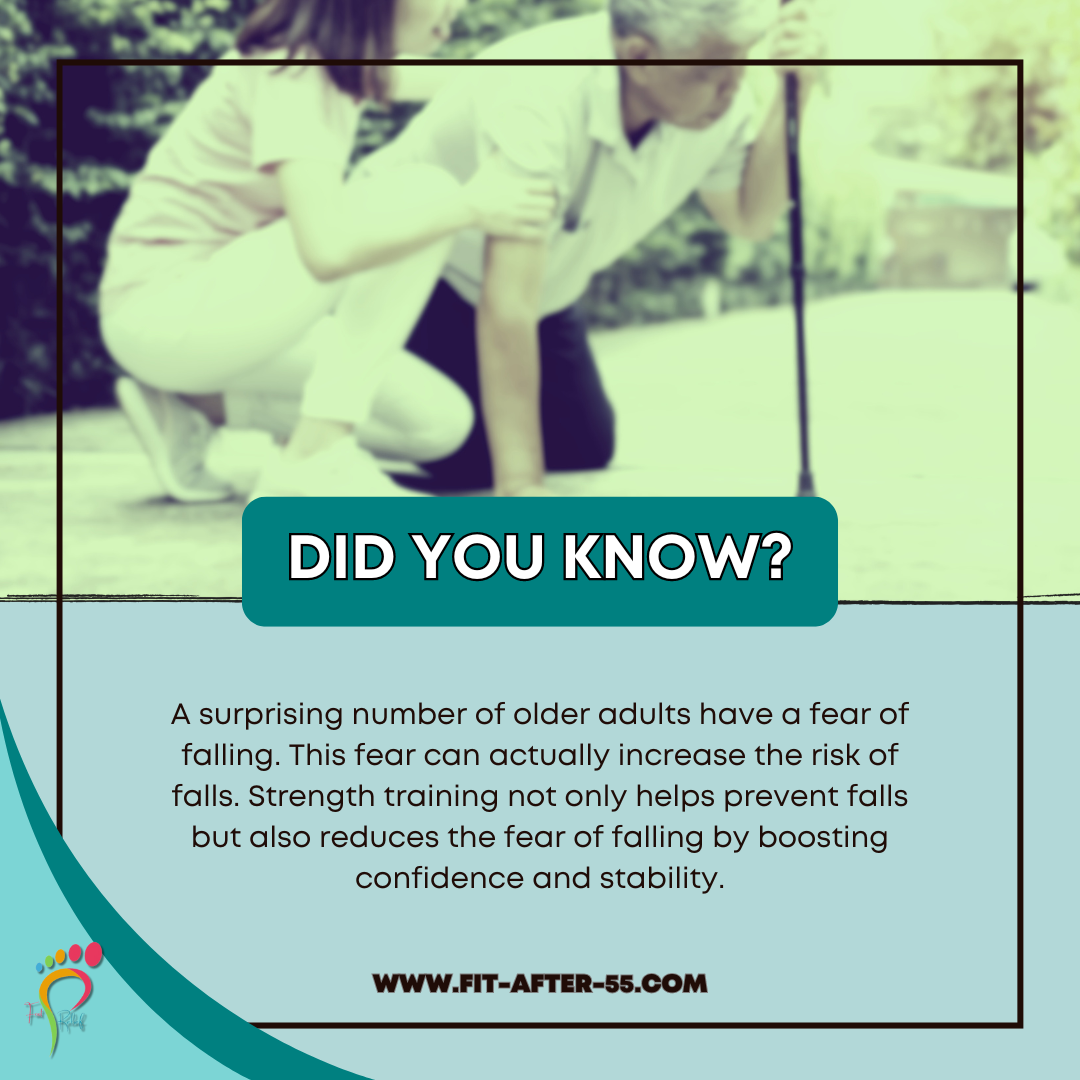
The Basics of Strength Training for Seniors
Strength training is a key way for older adults to stay healthy and independent. It helps build muscle, improve balance, and reduce the risk of falls.
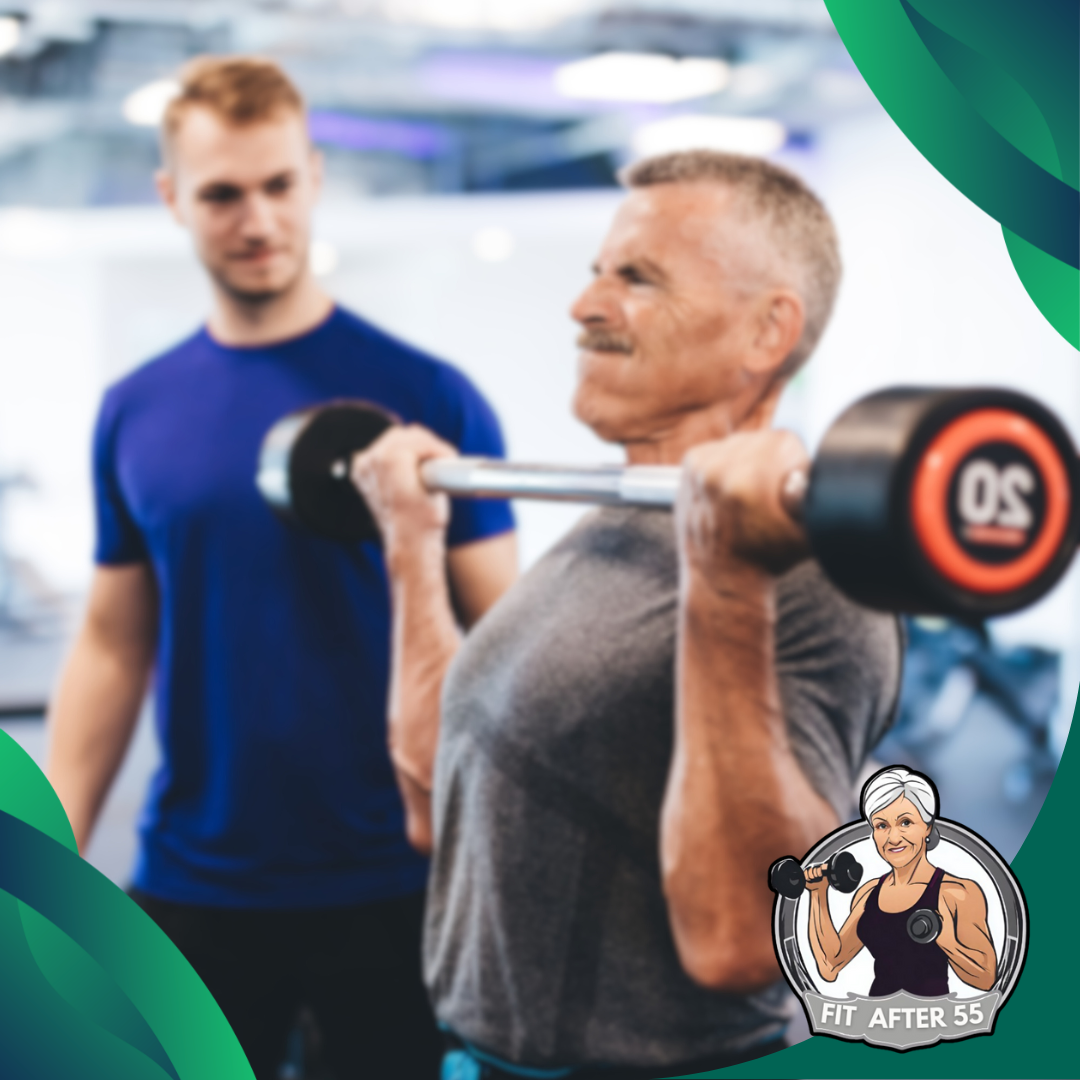
Defining Strength Training
Strength training uses resistance to make muscles work harder than usual. For seniors, this can mean using weights, resistance bands, or even your own body weight.
You don’t need fancy equipment to get started. Simple exercises like sit-to-stands can be very effective.
Aim to do strength training 2-3 times a week. Start with light weights and increase slowly. Focus on exercises that work large muscle groups like your legs, back, and chest.
Remember to warm up before you start and cool down when you’re done. This helps prevent injury and soreness.
Importance for the Senior Population
As you age, you naturally lose muscle mass. This can make daily tasks harder and increase your risk of falls. Strength training helps combat this by building and maintaining muscle.
Strong muscles make it easier to do things like climb stairs, carry groceries, and get up from chairs. This helps you stay independent longer.
Strength training also improves your bone density. This lowers your risk of fractures if you do fall. It can even help manage conditions like arthritis and diabetes.
Regular strength training can boost your mood too. Exercise releases chemicals in your brain that make you feel good. This can help fight depression and anxiety.
Benefits of Strength Training in Preventing Falls
Strength training offers many benefits for seniors. It can help you stay steady on your feet and avoid dangerous falls. Here’s how it works to keep you safe and strong.
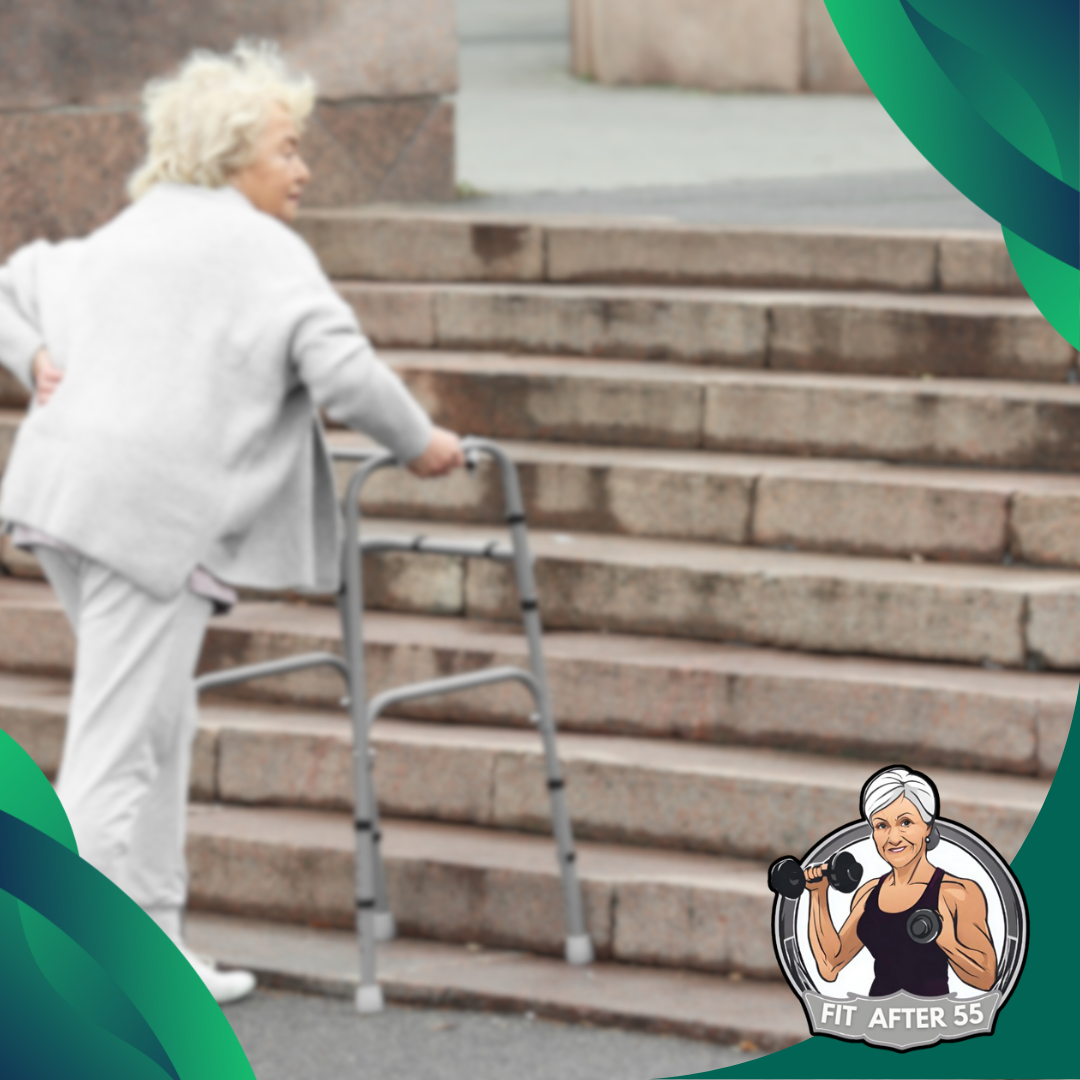
Improving Balance and Coordination
Strength training makes your body more stable. It helps you stand up straight and move with ease. When you do exercises like squats and lunges, you teach your muscles to work together better.
This teamwork helps you catch yourself if you trip. You’ll feel more sure-footed when walking on uneven ground. Your reactions get quicker too.
Strength moves also make your core stronger. A strong core is key for good balance. It helps you stay upright when you’re moving around.
Try balance exercises along with strength training. This combo is great for staying steady on your feet.
Enhancing Muscle Strength
As you age, your muscles can get weaker. But strength training can fix that. It builds up the muscles in your legs, arms, and core.
Stronger leg muscles help you walk better and climb stairs with ease. They also make it easier to get up from chairs.
Arm strength is important too. It helps you catch yourself if you start to fall. Strong arms make daily tasks easier, like carrying groceries.
Regular strength training can help you keep your independence. You’ll be able to do more things on your own. This boosts your confidence and lowers your fall risk.
Increasing Bone Density
Strength training doesn’t just help your muscles. It’s good for your bones too. When you lift weights or do bodyweight exercises, it puts good stress on your bones.
This stress makes your bones stronger and denser. Denser bones are less likely to break if you do fall.
Studies show that strength training can slow bone loss in older adults. It might even help build new bone.
Strong bones in your hips and spine are extra important. These areas are at high risk in falls. By keeping them strong, you lower your chance of serious injury.
Remember to start slow and use proper form. Talk to your doctor before starting a new exercise plan.
Strength Training Techniques and Safety

Strength training exercises can help seniors build muscle and improve balance. When done right, these exercises are safe and effective. Let’s look at some key exercises, safety tips, and ways to adapt workouts.
Recommended Exercises for Seniors
Start with bodyweight exercises like squats and wall push-ups. These build core strength and help with daily tasks. Add resistance bands for more challenge. Try bicep curls and leg presses with bands.
Ankle weights can boost leg strength. Use them for leg lifts and knee extensions. This helps with walking and climbing stairs.
Don’t forget about balance exercises. Try standing on one foot while holding a chair. Or walk heel-to-toe in a straight line. These moves help prevent falls.
Aim for 2-3 strength training sessions per week. Do 8-12 reps of each exercise. Rest for a day between workouts to allow muscles to recover.
Safe Practice Guidelines
Always warm up before exercising. Take a short walk or do some light stretches. This gets your muscles ready and lowers injury risk.
Use proper form for all exercises. If you’re not sure, ask a trainer or watch video guides. Bad form can lead to injuries.
Start with light weights or no weights at all. Focus on getting the moves right first. You can add more weight slowly over time.
Listen to your body. If something hurts, stop right away. A little muscle soreness is normal, but sharp pain is not.
Stay hydrated during workouts. Keep water nearby and take sips often.
Adapting Exercises for Different Fitness Levels
If you’re new to exercise, start slow. Chair exercises are a great way to begin. You can do seated leg lifts or arm raises while sitting down.
For those with better fitness, try standing exercises with light weights. As you get stronger, increase the weight or number of reps.
Some seniors may need to modify moves. For example, do wall push-ups instead of floor push-ups. Or use a chair for support during squats.
Don’t push too hard too fast. It’s okay to take breaks during your workout. Gradually build up your strength and endurance over time.
Remember, any movement is good movement. Even small efforts can lead to big improvements in strength and balance.
Role of Nutrition in Strength Training
Good nutrition is key for seniors doing strength training. The right foods and drinks help build muscle and boost energy. Let’s look at what to eat and drink for the best results.
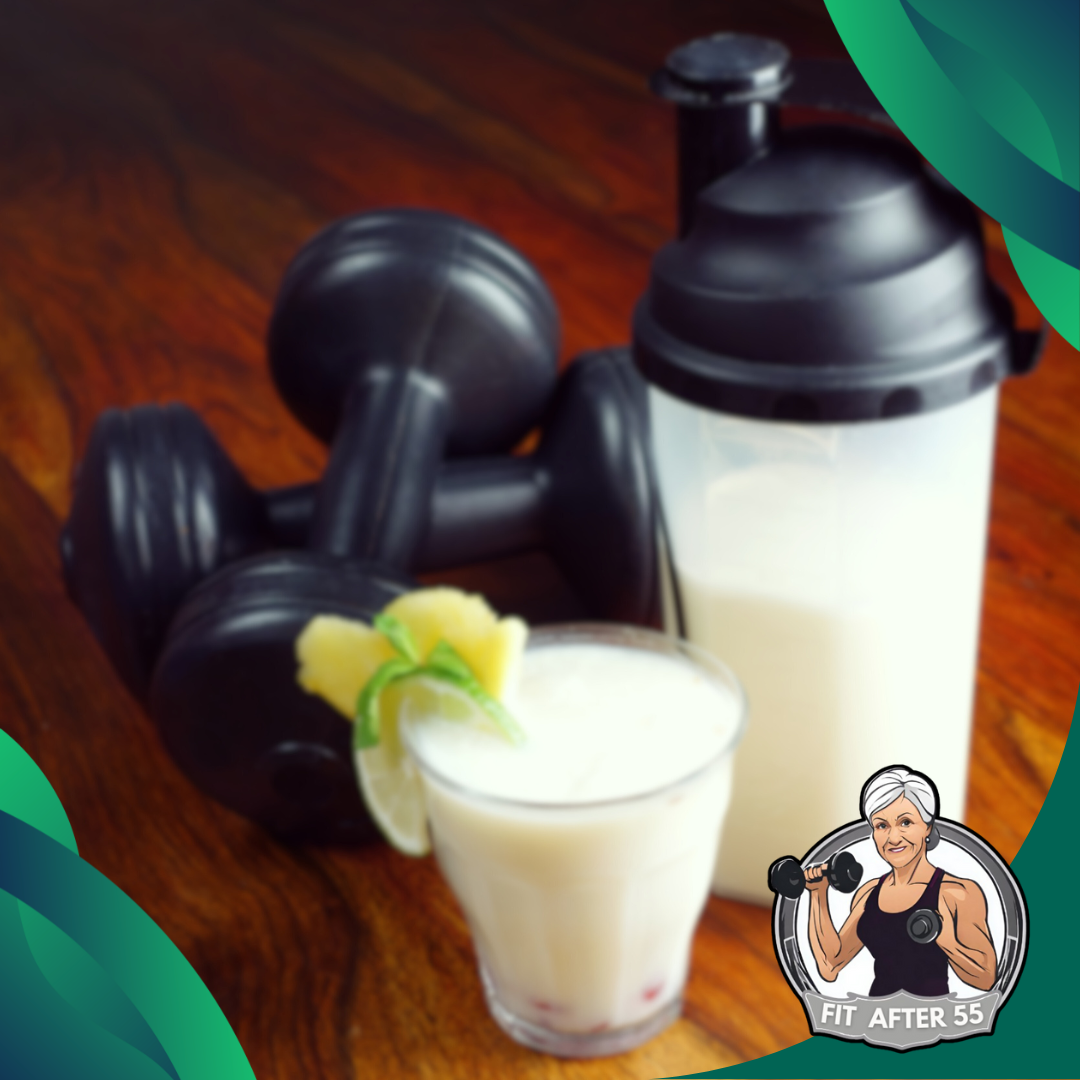
Essential Nutrients for Muscle Health
Protein is vital for building muscle. You need about 1 gram per kilogram of body weight daily. Good sources are lean meats, fish, eggs, and beans. Spread protein intake throughout the day for best results.
Calcium and vitamin D are important too. They keep bones strong as you exercise. Dairy products, leafy greens, and fortified foods are great choices.
Don’t forget about healthy fats. They help your body absorb vitamins. Nuts, seeds, and fish are good options.
Here’s a quick list of foods to include in your diet:
- Lean meats and fish
- Eggs and dairy
- Beans and lentils
- Leafy green vegetables
- Nuts and seeds
Hydration and Exercise
Drinking enough water is crucial when you exercise. It helps your muscles work better and prevents fatigue. Aim for 8 glasses a day, more if you’re very active.
During workouts, sip water every 15 minutes. This keeps you hydrated and alert. After exercise, drink to replace what you’ve lost through sweat.
Sports drinks can be helpful for longer workouts. They replace electrolytes you lose when sweating. But for most seniors, water is enough for regular strength training sessions.
Remember, thirst isn’t always a good sign of hydration needs in older adults. It’s best to drink water regularly throughout the day.
Integrating Strength Training Into Daily Life
Strength training doesn’t always mean hitting the gym. You can build muscle and improve balance through simple activities at home. This approach makes it easier to stick with your fitness routine.
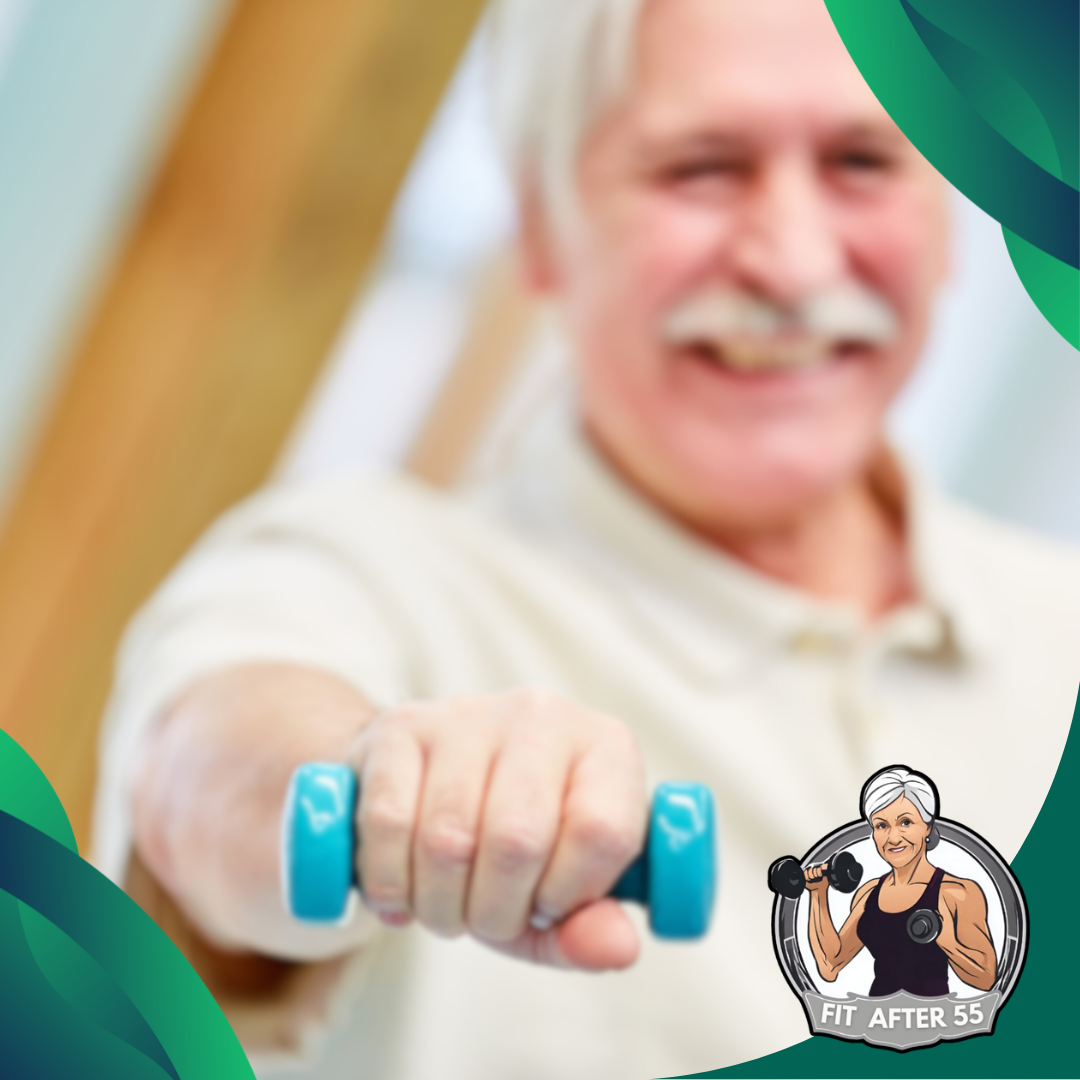
Setting Realistic Goals
Start small and build up over time. You might begin with standing on one foot while brushing your teeth. This helps improve balance.
Next, try doing squats while waiting for your coffee to brew. Aim for 5-10 squats at first. Increase the number as you get stronger.
Use daily chores as opportunities to exercise. Carry groceries to work your arm muscles. Take the stairs instead of the elevator to strengthen your legs.
Remember, progress takes time. Celebrate small wins along the way.
Creating a Sustainable Routine
Make strength training a natural part of your day. Look for chances to add movement to tasks you already do.
Try these simple ideas:
- Do calf raises while washing dishes
- Perform wall push-ups during TV commercials
- Practice leg lifts while talking on the phone
Set reminders on your phone or leave notes around the house. These can help you remember to do your exercises.
Find an exercise buddy to keep you motivated. This could be a friend, family member, or neighbor. You can check in with each other and share progress.
Remember to listen to your body. If something hurts, stop and rest. It’s okay to take breaks when you need them.
Monitoring Progress and Adjusting Workouts
Keeping track of your strength training progress is key to preventing falls. Regular checks help you see improvements and know when to make your workouts harder.
Tracking Improvements in Stability
Use balance tests to check your progress. Try standing on one foot with your eyes closed. Time how long you can hold this pose. Do this test once a week and write down your results.
Another good test is the Timed Up and Go test. Sit in a chair, stand up, walk 10 feet, turn around, walk back, and sit down. Time yourself. As you get stronger, you’ll do this faster.
Keep a workout log. Write down the exercises you do, how many times you do them, and how much weight you use. This helps you see your progress over time.
Recognizing When to Increase Intensity
Pay attention to how easy or hard your workouts feel. If you can do all your reps without getting tired, it’s time to make things harder.
Try the two-for-two rule. If you can do two extra reps in your last set for two workouts in a row, add more weight.
You can also make exercises harder by:
- Slowing down your movements
- Doing more reps
- Using resistance bands
Listen to your body. If you feel pain or get very tired, take a break. It’s okay to have easy days. The goal is to get stronger over time, not to push too hard too fast.
Understanding and Managing Risks of Injury
Staying safe while exercising is key for seniors. You can take steps to lower your chances of getting hurt. Let’s look at what puts you at risk and how to stay safe during workouts.
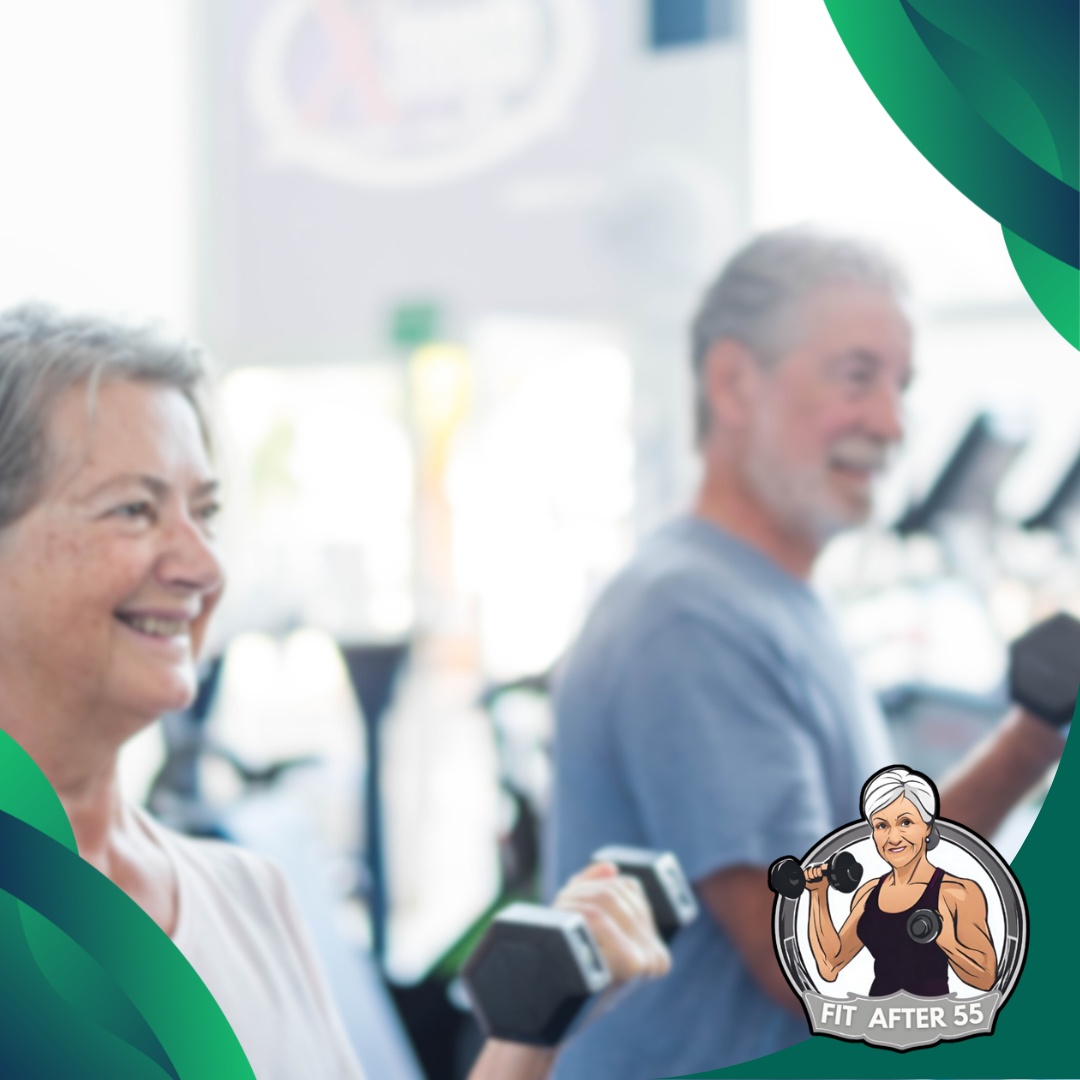
Identifying Risk Factors for Falls
As you age, some things make you more likely to fall. Poor balance and weak muscles are big risk factors. Certain health issues can also raise your risk. These include:
• Vision problems • Inner ear troubles • Taking many medicines • Low blood pressure • Foot pain or numbness
Your home can have risks too. Loose rugs, poor lighting, and clutter make falls more likely. Slippery floors in the bathroom are also risky.
Knowing these factors helps you take action. You can work on your balance and strength. You can also make your home safer.
Strategies to Minimize Injury During Exercise
When you work out, you want to get stronger without getting hurt. Here are some tips to help you stay safe:
- Start slow and easy. Build up over time.
- Warm up before you exercise.
- Use the right gear, like good shoes.
- Learn the correct form for each move.
- Don’t push too hard. Listen to your body.
Balance training is great for fall prevention. But do it safely. Use a chair or wall for support at first.
For strength training, start with light weights. Move up slowly as you get stronger. Always keep good form.
If something hurts, stop right away. Talk to your doctor if pain lasts.
Encouraging Community and Support
Working out with others and getting expert help can make strength training more fun and effective. You’ll be more likely to stick with it when you have friends and pros cheering you on.

Forming Exercise Groups
Joining a workout group can be a great way to stay motivated. Look for local senior centers or gyms that offer group classes for older adults. You might find classes like “Silver Sneakers” or “Active Aging” that focus on strength and balance.
You can also start your own group with friends or neighbors. Set a regular time to meet at someone’s home or a local park. Take turns leading exercises or follow along with a fitness video together.
Group workouts are more than just exercise – they’re a chance to socialize and have fun. You’ll look forward to seeing your workout buddies each week.
Seeking Professional Guidance
Working with a pro can help you exercise safely and effectively. A physical therapist or certified fitness instructor can teach you the right way to do strength exercises.
They’ll show you how to use proper form to avoid injury. They can also help you create a workout plan that fits your needs and abilities.
Many gyms offer free sessions with a trainer when you join. Take advantage of this to learn the basics. You might also consider hiring a trainer for a few sessions to get personalized tips.
Don’t be shy about asking questions. A good trainer will be happy to explain things and make sure you feel comfortable with each exercise.
Testimonials and Success Stories
Many seniors have found success with strength training to prevent falls. You’ll be inspired by their stories.
Mary, 72, started lifting weights twice a week. After 6 months, she noticed a big change. “I feel steadier on my feet now,” she says. “I can carry groceries without worry.”
Tom, 68, had trouble with balance. He joined a senior fitness class focusing on strength and balance exercises. “Now I can play with my grandkids without fear of falling,” he beams.
Sarah, 75, was scared of falling on stairs. She started doing squats and leg presses. “I climb stairs with ease now,” she shares. “It’s given me back my freedom.”
Bill, 70, struggled with gardening. After 3 months of upper body training, he proudly says, “I can tend my garden for hours without getting tired or wobbly.”
These stories show how strength training can change lives. You too can gain confidence and stay active.
Remember, it’s never too late to start. With the right program, you can improve your strength and reduce fall risk. Why not give it a try? You might be surprised by what you can achieve.
Resources and Further Reading
Want to learn more about strength training for fall prevention? Check out these helpful resources:
Balance and strength exercises from Johns Hopkins Medicine offer simple moves you can do at home. They show how to do sit-to-stand and balance exercises safely.
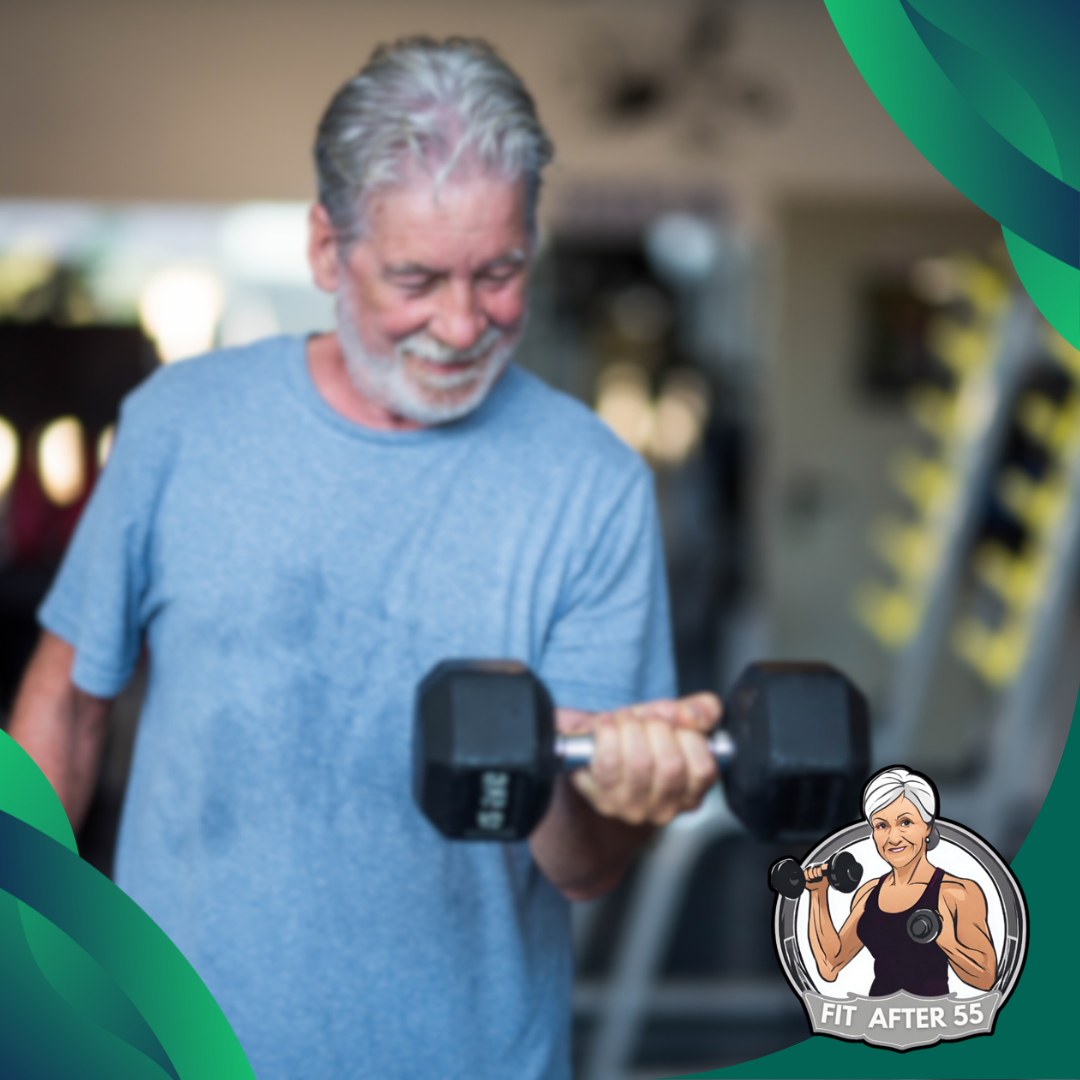
For a deep dive into the science, read this systematic review on strength training to prevent falls in older adults. It looks at many studies to see how well these exercises work.
Harvard Health has a great article on balance training for seniors. It talks about how exercise helps your reaction time and overall fitness.
Looking for specific exercises? Try these safe strength training moves for seniors. They include squats, lunges, and upper body exercises you can do at home.
Remember, always talk to your doctor before starting a new exercise program. They can help you find the safest and most effective exercises for your needs.
How Strength Training Helps Prevent Falls: A Final Word
After delving into the world of strength training and its benefits for seniors, it’s clear that this simple yet powerful practice can significantly reduce the risk of falls and injuries. By improving balance, muscle strength, and reaction time, strength training empowers older adults to maintain their independence and quality of life.
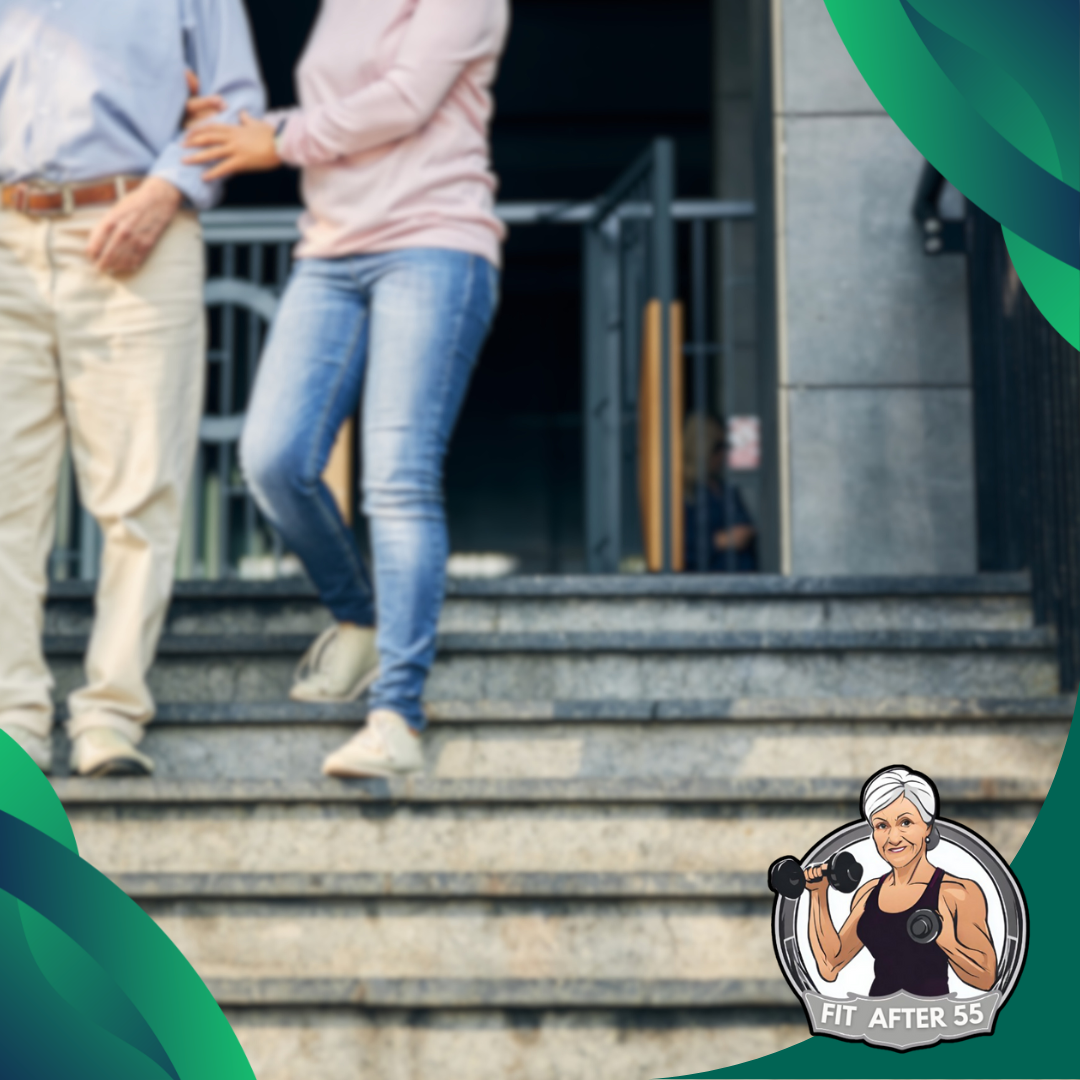
Remember, it’s never too late to start a strength training regimen. Whether you’re just beginning your fitness journey or looking to enhance your existing routine, there are countless ways to incorporate strength exercises into your daily life. From bodyweight exercises to resistance band training, there’s something for everyone.
So, why not take the first step towards a safer and more fulfilling future? Start strength training today and discover the incredible benefits for yourself.
Frequently Asked Questions
Strength training is a key tool for fall prevention in seniors. It helps build muscle, improves balance, and boosts confidence. Let’s explore some common questions about this important topic.
What types of strength exercises are effective for fall prevention in older adults?
Exercises that target balance, gait, and mobility are most effective for fall prevention. These include leg lifts, squats, and calf raises. You can also try standing on one foot or walking heel-to-toe.
Can regular strength training reduce the risk of injuries in seniors?
Yes, it can. Strength training improves muscle strength and flexibility, which helps protect your body during falls. It also speeds up your reaction time, allowing you to catch yourself more quickly.
What is the recommended frequency of strength training for seniors to help prevent falls?
Aim for strength training sessions 2-3 times per week. Start with light weights and gradually increase as you get stronger. Remember to leave a day of rest between workouts to allow your muscles to recover.
Are there specific strength training routines recommended for fall prevention among the elderly?
Many fall prevention programs focus on balance exercises. A good routine might include leg raises, wall pushups, and chair squats. Always start with a warm-up and end with a cool-down stretch.
How do strength exercises improve balance and stability in seniors?
Strength exercises build muscle in your legs, core, and back. This increased muscle strength helps you maintain proper posture and stay steady on your feet. It also improves your body’s ability to make quick adjustments to keep you balanced.
What are some simple strength training movements that seniors can do at home to prevent falls?
You can do many effective exercises at home with little or no equipment. Try chair stands, wall pushups, or marching in place. Using resistance bands for arm and leg exercises is also a great option. Always prioritize safety and start slowly.
Stay Active, Stay Connected: Your Fitness Journey Awaits!
Ready to put these strength training tips into action? Head over to our website, Fit After 55 (https://fit-after-55.com), for engaging articles, informative product reviews, and tons of resources to keep you motivated.
Join our supportive community on Facebook (https://www.facebook.com/profile.php?id=61557390788711) to connect with like-minded individuals, share your fitness journey, and get inspired by others! Let’s move forward together, stronger and healthier!

